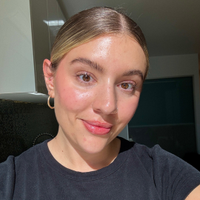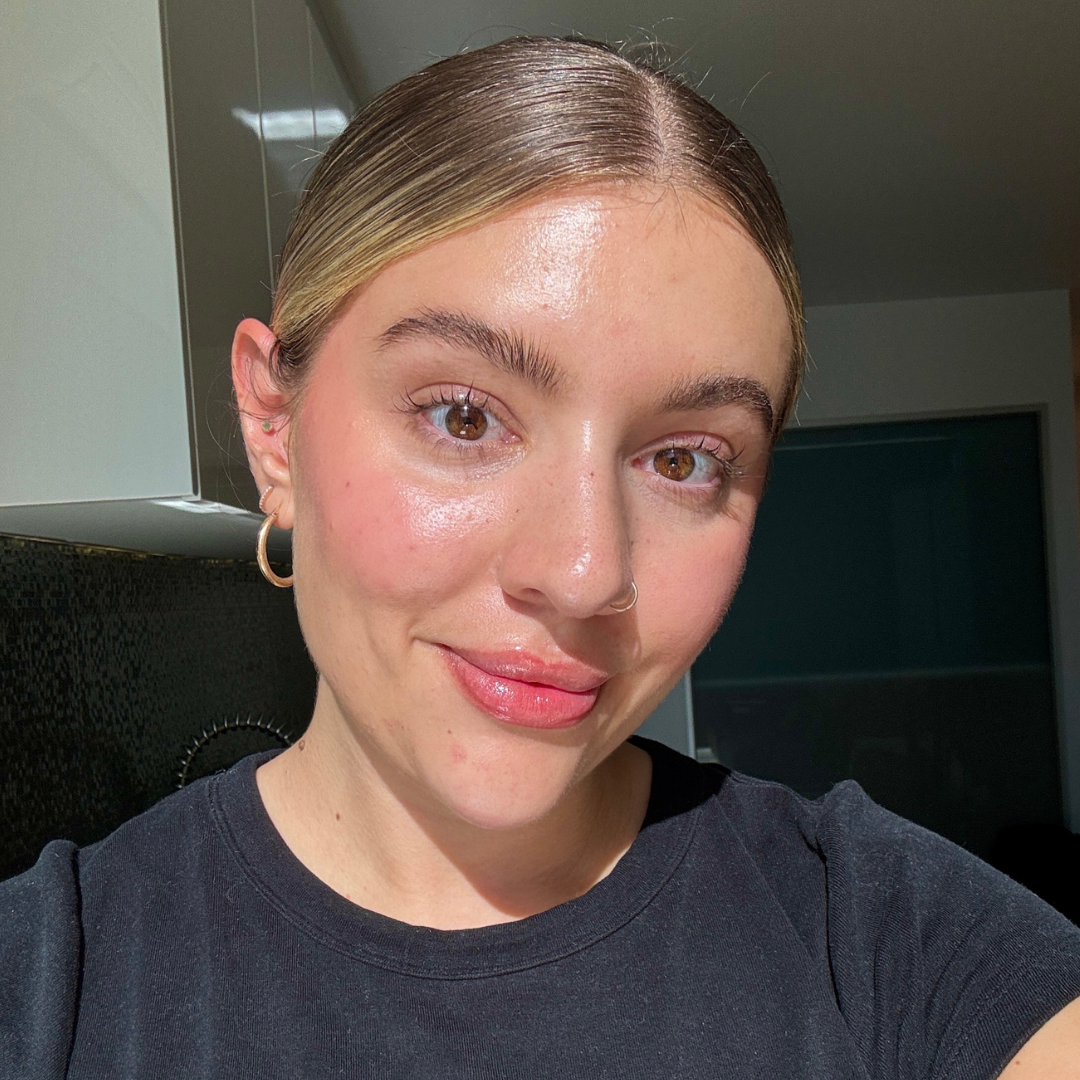Botox is one of the most popular aesthetic treatments around—here's what you should know about it
The facts injectors want you to know


Botox is one of the most commonly-known injectable treatments you can have, along with fillers. While treatments like Traptox and Jelly Roll Botox get a lot of airtime on social media, there still seems to be a lot of mystery around anti-wrinkle injections as a whole. Whether it be because many people still feel the need to keep their injectable treatments under wraps or they just don't want to appear to ask a silly question, Botox and other anti-wrinkle injectables are simply not discussed enough—particularly when you consider their huge popularity with an estimated 900,000 Botox injections carried out in the UK every year.
However, when you're getting injectables in your face, there is absolutely no such thing as a 'silly question'. So with that said, we spoke with two top experts in aesthetic injectables to ask them the basics, from what Botox is actually made from to the potential side effects.
A post shared by Dr.Alicia Gonzalez-Fernandez (@dr.aliciagonzalezfernandez)
A photo posted by on
What is Botox and what is it made of?
"The generic non-brand name for Botox is onabotulinumtoxinA, and it is one of seven different botulinum toxin strains that are produced from a culture of a bacterium called the Clostridium botulinum," explains aesthetic doctor, Dr Alicia Gonzalez-Fernandez.
"Botox is made by a company called Allergan, and it is the trade name for Botulinum toxin—like how Panadol is the trade name of paracetamol," adds doctor and pharmacist, Dr Christine Hall, who practises aesthetic medicine at the TakTouk clinic in London.
Botox was interestingly first used in the medical world by an ophthalmologist called Dr Alan B. Scott. "Dr Scott was researching to find a non-surgical protocol for children with strabismus, a condition in which the eyes are misaligned," says Dr Gonzalez-Ferandez. "He wanted to develop a therapy that had the following characteristics: it would be locally injected, it would last long enough to cause a therapeutic effect but it would not be permanent."
Since its inception into medicine, the toxin has, according to Dr Hall, "been used safely in medicine for over 30 years".
A post shared by Taktouk Clinic (@taktoukclinic)
A photo posted by on
What does Botox do?
Botox has many uses, but in the context of aesthetics, "it temporarily lowers muscle activity by stopping a chemical called acetylcholine from being released into the muscle," says Dr Gonzalez-Fernandez.
Celebrity news, beauty, fashion advice, and fascinating features, delivered straight to your inbox!
Dr Hall expands: "Normally, our nerves carry signals to our muscle which make them move. When our muscles move they create wrinkles which over time become permanent. When you inject Botox into key muscles some of these signals are blocked and so the movement of that muscle and the appearance of lines are reduced."
This is why many people use Botox to address signs of ageing they may not be happy with, such as fine lines and wrinkles.
Where can Botox be injected?
Traditionally, many of us likely will have seen Botox as a 'forehead-only' injectable, but these days this is far from the truth. In fact, the number of ways and places you can use Botox seems to be growing all the time.
Dr Gonzalez-Fernandez explains that Botox can be used for everything from "treating the masseter muscles for the treatment of teeth grinding and for a subtle jaw slimming effect" to "injecting Botox into the eyebrow to perform what we call a chemical brow lift, in which we can subtly elevate the eyebrows."
"We can also use Botox to treat 'gummy smile' by treating different muscles that raise the lip when you smile. Another very popular treatment is the lip flip, which can improve the visible pink lip and a give a lip lift."
Aesthetically, Dr Christine lists the following area of 'concern' as good contenders for Botox treatment:
- Forehead lines
- Frown lines
- Smile lines or crows feet
- Lip flip
- Gummy smile
- Brow lift
- Smokers' lines of the top lip
- Downturned corners of the mouth
- Nasal flaring
- Bunny lines across the nose
- Chin to reduce dimpling and the crease that forms
- Neck lift or the ‘Nefertiti lift’
- Masseter muscle for teeth grinding
Some lesser-known uses include treating excessive sweat under the armpits, 'calf-slimming' treatments, treatment for chronic migraine, and to "decrease incontinence in patients with detrusor overactivity and overactive bladder", says Gonzalez-Fernandez.
Can everybody have Botox?
In short, no. As we'll touch on later, some people may be allergic to Botox, and should avoid any further treatment. It is also highly advised that those who are pregnant or breastfeeding should avoid Botox, as well as those taking certain medications and those with certain muscle-related health disorders or skin infections. For this reason, it is very important that you disclose your full health status to your practitioner.
What are some common and less common side effects of Botox?
Both experts we spoke with confirm that the most common side effects of a Botox treatment are more related to needle trauma rather than the Botox itself. Dr Gonzalez-Fernandez says these include "bruising or bleeding at the injection site, swelling and localised pain," but "usually resolve themselves within a few hours up to a few days".
She says other common, but short-term, side effects include "headache or upper respiratory infection," and as with other drugs, there is always a very slight chance of allergic reactions, which would manifest through "itching, rash, swelling of the eyelids, hands, or feet, hives, flushing, swelling of the mouth, tongue or throat".
Dr Hall adds: "Botox is a very safe drug, but like most things, there are some adverse results, such as the dreaded dropped brow or raised eyebrow which occur when Botox is administered incorrectly. To minimise this risk make sure you see a practitioner who has the relevant medical training and knowledge of anatomy to be able to deliver Botox safely."
Both doctors recommend that any side effects which are causing you concern should be checked with your injector or a medical practitioner instantly, if severe.
What is the downtime like?
Luckily, there is actually very little downtime with Botox, meaning it can even be administered on a lunch hour. As mentioned, the most common side effects are a little bruising or swelling, so these would be the only areas of concern. Just wait around 30 minutes for any small bumps to go down, and you should be OK to continue with your day—as long as you take into account certain aftercare steps.
What are the best Botox aftercare tips?
There are several things you should avoid after going for your Botox appointment. "It is important not to touch your face immediately after injection to avoid infection and avoid putting cosmetics for the rest of the day," says Dr Gonzalez-Fernandez.
Dr Halls also adds that patients are asked to avoid "alcohol, exercise, saunas and anything that gets you too hot and sweaty (as these will all increase the risk of bruising)" for around 24 hours.
Your injector should clean the area afterwards with an antimicrobial ointment, and they will likely advise you to stay away from ibuprofen and aspirin, which can exacerbate bruising.
What are the rules on who can administer it in the UK and how can you find a safe injector?
As is being more commonly discussed, "aesthetic medicine is hugely under regulated in the UK," notes Dr Hall. "There are no rules as to who can deliver dermal fillers or botulinum toxin, making it a dangerous and risky market for consumers who haven’t had a chance to do their research into the area. You do not need to have had any medical training at all."
However, although anyone can administer Botox (and that's not to say they should) there are rules around who can oversee the treatment. "Botulinum toxin is a prescription-only product in the UK, meaning it can only be prescribed by medical practitioners, which is slightly better than the case with dermal fillers as these are freely available to buy online. Despite this, non-medical practitioners are able to obtain botulinum toxin by using a prescribing service where a prescriber consults with the patient and then prescribes the drug. The non-medical injector then delivers it and the whole process is completely within the UK laws," adds Dr Hall.
With this in mind, it is widely considered that these regulations are not enough to ensure save treatment, which means it is very important to do your research, look for someone who is a qualified medical professional, read reviews and ask around. The best recommendations often come through word of mouth.
Dr Gonzalez-Fernandez explains that you should also "feel comfortable to ask your injector about their qualifications, training and experience, and they should be happy to explain those to you."
"Without question, you should always choose a regulated healthcare professional. This includes doctors, nurses, dentists and clinical pharmacists," Dr Gonzalez-Fernandezadds. "This means they should have a licence in the UK with the regulatory body that governs their practice. For doctors, that would be a GMC licence, for dentists a GDC licence, for nurses an NMC licence, and for pharmacists GPhC. As a member of the public you are able to check that the health professional you choose is registered with their appropriate regulating body with a quick Google search."
How much does Botox usually cost?
This really varies on your location and who you visit.
"The price of Botox treatments vary considerably depending on the area being treated, the clinic location and the expertise and qualifications of the person who is injecting but typically, you might expect to pay between £250 to £500 for three treatment areas," says Dr Christine.

Rebecca is a freelance beauty journalist and contributor to Marie Claire. She has written for titles including Refinery29, The Independent, Grazia, Coveteur, Dazed, Stylist, and Glamour. She is also a brand consultant and has worked with the likes of The Inkey List on campaign messaging and branded copy. She’s obsessed with skincare, nail art and fragrance, and outside of beauty, Rebecca likes to travel, watch true crime docs, pet sausage dogs and drink coffee. Rebecca is also passionate about American politics and mental health awareness.